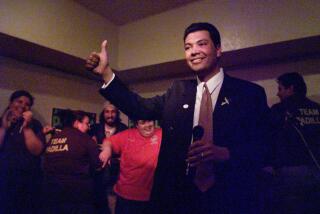Neighborhood Spotlight: Agoura Hills continues its slow-growth tradition
The recorded history of Agoura Hills begins, like so many other Southern California cities, with the bestowment of a grandiloquent place name by Franciscan missionary Father Juan Crespi.
In 1769, when the band of Spanish explorers he was accompanying crested the hills that divided the San Fernando and Conejo valleys, he dubbed the land that lay before them El Triunfo del Dulcisimo Nombre de Jesus.
Crespi described in his diary “a plain of considerable extent and much beauty, forested in all parts by live oaks,” and his thumbnail sketch of the place had two key words that surely pricked the ears of cattlemen throughout the kingdom of Spain: “pasture” and “water.”
By 1802, cattle ranchers were beginning to make good on the promise of all that grazing land.
The dominant local spread was the Rancho Las Virgenes, which covered 17,000 acres of the Conejo Valley floor. After the death of the original land grantee in 1809, the massive rancho alongside the busy Camino Real was all but abandoned and largely stayed fallow until 1833, when the Dominguez family took ownership.
It was from them that Maria Antonia Machado, the widow of one of the scions of the pioneering Reyes family, purchased the rancho in 1845. In 1850, her son Jose began laying the clay bricks that would make up the Reyes Adobe, a historic landmark in that still stands in Agoura Hills.
By 1906, ownership of the rancho had passed to a colorful immigrant and sheepherder named Pierre Agoure who, although French, bestowed upon himself the Spanish honorific “Don.” Just a few years after his death in 1912, Independence Acres, the first subdivided tracts carved from the rancho, was opened to buyers.
When Hollywood began building movie ranches in the area in the 1920s, the settlement was re-dubbed “Picture City,” but when the Postal Service forced local residents to choose a one-word name for their post office, they settled upon “Agoura,” a misspelling of the legendary Basque’s last name.
The “Hills” portion of Agoura Hills was added when the area incorporated in 1982 in a bid to exert more local control over zoning. The new city successfully blocked construction of a prison, had the billboards that lined the 101 freeway removed and dramatically slowed the pace of residential development.
Today’s Agoura Hills carries on in that slow-growth tradition while retaining its popularity as a bedroom community for L.A. and the Thousand Oaks area.
Neighborhood highlights
Gateway to the Santa Monica Mountains: Close to Malibu Creek State Park, the Paramount Ranch and Triunfo Creek Park, Agoura Hills offers access to scenic hikes, a major selling point.
Where L.A. meets Ventura County: Almost equidistant from Thousand Oaks and the west Valley, Agoura Hills is convenient to major employment and retail destinations in two counties.
Making the grade: Agoura Hills is within the highly regarded Las Virgenes Unified School District, which serves affluent communities in the Conejo Valley.
Neighborhood challenge
Where the 1980s live on: Slow-growth has become almost no-growth, leaving Agoura Hills with a dearth of modern housing but with plenty of beige stucco ranch homes.
Expert insight
Linda Rich of Sotheby’s International Realty has worked in Agoura Hills for 22 years and lived there for three decades. She said the quaint community attracts newcomers with its solid school system and emphasis on open spaces.
“The City Council is very cognizant of the community’s desire to protect the open environment,” Rich said.
For that reason, a controversy is brewing at the foothills of Ladyface Mountain, where a planned commercial development is polarizing city residents.
“Some people are worried that it’ll hurt the aesthetic appeal of the raw mountain,” Rich said.
Regarding the city’s residential look, she noted that because the majority of homes went up in the 1980s, Agoura Hills isn’t known for any specific architectural styles. However, newer city buildings, such as the library and City Hall, have been designed in the Craftsman style, which will perhaps lead others to follow suit.
Market snapshot
In the 91301 ZIP Code, based on 11 sales, the median sales price for single-family homes in December was $1.065 million, up 19.4% year over year, according to CoreLogic.
Report card
All five public schools in Agoura Hills scored above 870 in the 2013 Academic Performance Index. Three scored more than 900: Willow Elementary, at 931; Yerba Buena Elementary at 928; and Lindero Canyon Middle at 918.
Agoura High scored 881, and Sumac Elementary scored 878.
Times staff writer Jack Flemming contributed to this report.
MORE FROM HOT PROPERTY
True Religion co-founder Kym Gold sizes up the Encino housing market
Leeza Gibbons seeks $18.5 million for East Coast-vibe mansion in Beverly Hills
Beverly Hills estate of Desmond’s department stores owner seeks $8.495 million











